Ha Giang Province in Northeast Vietnam stands as one of the country’s last frontiers for authentic travel experiences, offering breathtaking landscapes that seem untouched by time. Perched along the Chinese border, this remote region captivates visitors with its dramatic limestone peaks, terraced rice fields cascading down mountainsides, and vibrant ethnic minority cultures. From the heart-stopping curves of the Ma Pi Leng Pass to the colorful Sunday markets where hill tribes gather in traditional dress, Ha Giang presents a Vietnam far removed from the tourist crowds of Halong Bay or Hoi An. As sustainable tourism gradually opens this once-isolated province to the world, now is the perfect moment to experience its raw beauty and cultural richness.
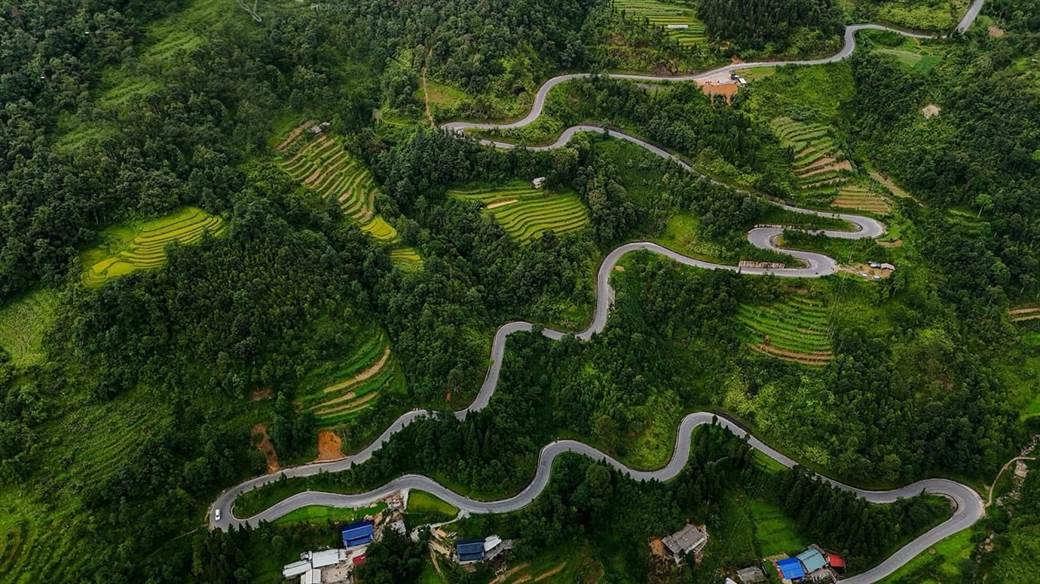
1. Introduction: Why Visit Ha Giang?
Ha Giang represents Vietnam at its most authentic and dramatic, standing apart from the country’s more developed destinations. Unlike the tourist-heavy attractions elsewhere, this northernmost province remains largely untouched by mass tourism, preserving both its natural grandeur and cultural traditions. Here, geography defines everything towering karst formations create a landscape that seems otherworldly, while deep valleys carved by emerald rivers provide shelter to communities that have maintained their distinct ways of life for centuries.
The province offers travelers something increasingly rare in our connected world: genuine discovery. When you venture through Ha Giang’s winding mountain roads, you’ll encounter Hmong, Dao, Tay, and Lo Lo villages where traditional dress isn’t worn for tourists but as everyday attire. Local markets operate as they have for generations, serving as community gathering places rather than souvenir stops.
Adventure enthusiasts find paradise in Ha Giang’s challenging terrain, whether navigating the famous Ha Giang Loop by motorcycle or trekking between remote villages. Photography lovers capture scenes that could grace National Geographic children playing against backdrops of terraced fields, elderly women in vibrant indigo clothing, and mist-shrouded mountains at dawn. For those seeking meaningful cultural exchange, homestays with local families provide insight into ways of life that have remained largely unchanged despite the modern world’s rapid advancement.
Ha Giang travel route map updated after the July 1, 2025 merger
2. Geography & Ethnic Diversity
The province’s remote location and rugged terrain have shaped both its landscapes and its people. Home to 22 ethnic minorities, Ha Giang is a living mosaic of traditions and history.
2.1 Map & Location
Ha Giang Province occupies Vietnam’s northernmost territory, sharing a 270-kilometer border with China’s Yunnan Province. This strategic location has shaped its development and cultural identity throughout history. The province spans approximately 7,945 square kilometers of predominantly mountainous terrain, making it one of Vietnam’s most challenging landscapes to navigate.
The provincial capital, Ha Giang City, sits along the Lo River approximately 320 kilometers north of Hanoi. From this modest urban center, the landscape quickly transforms into dramatic highlands, with elevations ranging from 800 to over 1,500 meters above sea level. The Dong Van Karst Plateau Geopark, recognized by UNESCO for its geological significance, dominates the northern districts with its otherworldly limestone formations.
Major geographical features include the winding Nho Que River cutting through spectacular Tu San Canyon, the Tam Son valley with its twin fairy mountains, and multiple mountain passes that test even experienced drivers. The province is divided into 11 administrative districts, with the northernmost districts of Dong Van, Meo Vac, and Yen Minh containing the most dramatic scenery and richest cultural heritage. Natural boundaries have historically isolated these areas, creating distinct cultural pockets that preserved unique traditions even as lowland Vietnam underwent rapid modernization.
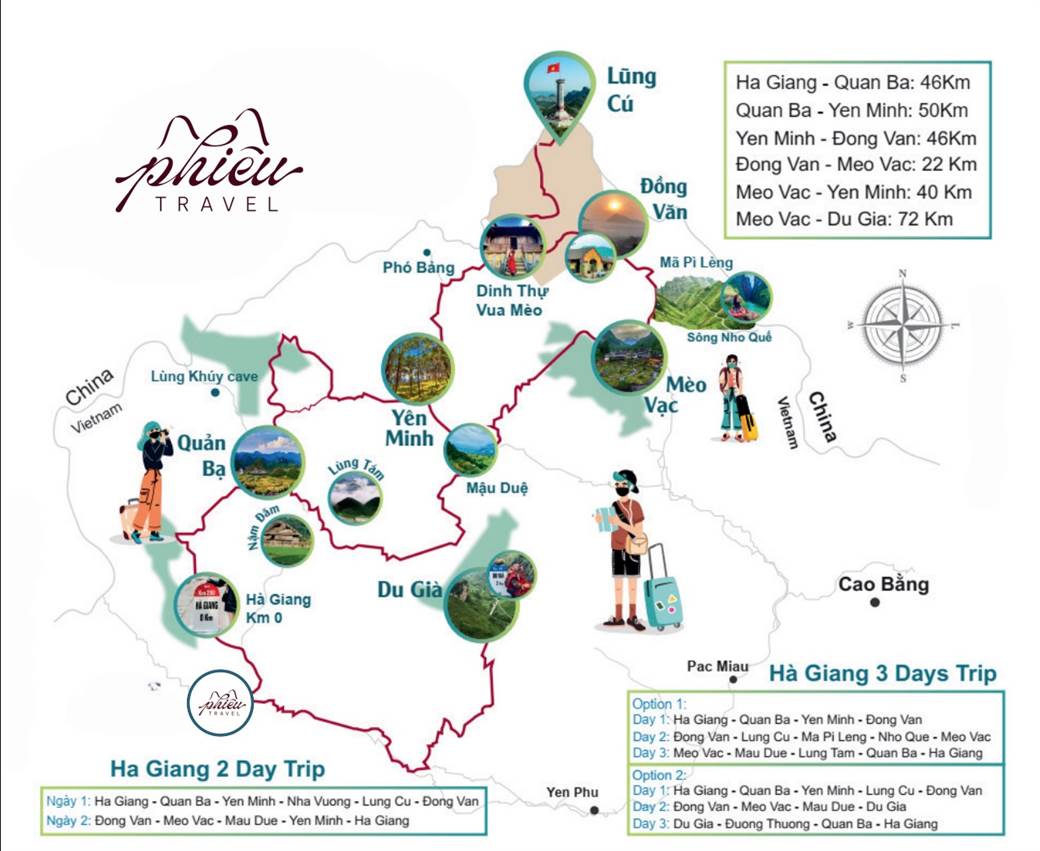
2.2 Ethnic Groups and Traditions
Ha Giang stands as Vietnam’s most ethnically diverse province, home to 22 distinct minority groups that make up over 85% of its population. The Hmong people form the largest minority group, recognizable by their indigo-dyed clothing and distinctive silver jewelry. Living primarily in the highest mountain regions, they maintain strong cultural traditions including elaborate New Year celebrations, intricate embroidery techniques, and unique agricultural practices adapted to steep terrain.
The Dao (Yao) people, identified by the women’s red headdresses and distinctive facial tattoos, occupy middle-elevation areas. Their spiritual practices blend animism with elements of Taoism, and many communities still consult shamans for important life decisions. Traditional herbal medicine knowledge remains highly valued among Dao communities, with some healers recognized throughout Vietnam for their expertise.
In lower valleys, the Tay and Nung groups build distinctive stilt houses with living quarters raised above ground level. Their agricultural calendar centers around wet rice cultivation in river valleys, contrasting with the Hmong’s dry field farming on mountainsides. The smallest ethnic groups, including the colorfully dressed Lo Lo and the Pa Then, face challenges preserving their languages and customs as younger generations increasingly integrate with mainstream Vietnamese society.
Cultural preservation efforts focus on traditional crafts like brocade weaving, silver crafting, and woodworking. Annual festivals showcase these cultural treasures, with the Khau Vai Love Market drawing visitors to witness one of the region’s most unique traditions a gathering where former lovers separated by tribal differences meet once yearly. Phieu Travel works with local communities to ensure tourism supports rather than diminishes these cultural practices, creating experiences that benefit both visitors and host communities.
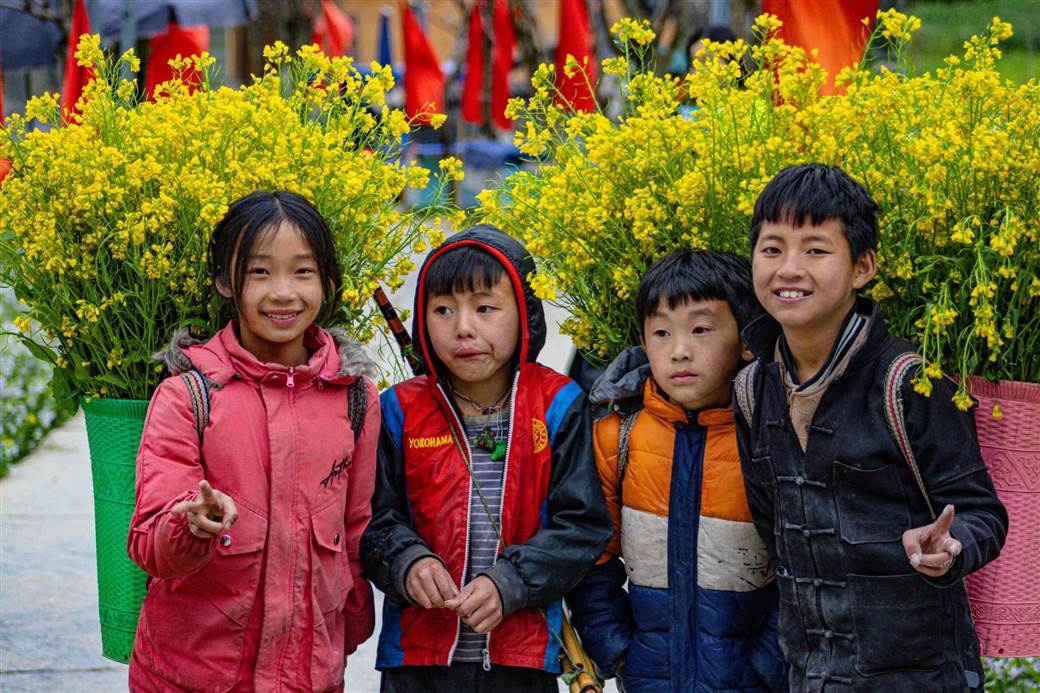
3. Top Natural Attractions
From iconic mountain passes to UNESCO-protected plateaus, Ha Giang’s landscapes are simply breathtaking. Each natural wonder offers a unique perspective on the province’s dramatic beauty.
3.1 Ma Pi Leng Pass
Ma Pi Leng Pass stands as the undisputed crown jewel of Ha Giang’s natural wonders, earning its reputation as Vietnam’s “King of Passes.” This 20-kilometer stretch of road connects the towns of Dong Van and Meo Vac, carved dramatically into the mountainside at altitudes reaching 1,500 meters. Constructed largely by hand in the 1960s by ethnic minority workers, the pass represents both an engineering marvel and a testament to human determination against nature’s most imposing obstacles.
The road’s most spectacular section features sheer limestone cliffs plunging hundreds of meters to the winding Nho Que River below. Numerous viewpoints along the way offer heart-stopping vistas across undulating mountain ranges that stretch toward the Chinese border. The most famous viewpoint, known as Heaven’s Gate, provides a panoramic perspective that transforms dramatically with changing weather and seasons.
For photographers, the play of morning light and mist across the canyon creates ethereal scenes unlike anywhere else in Vietnam. The pass is best experienced early in the day when visibility is clearest and the rising sun illuminates the eastern faces of the karst formations. Travelers should note that while road conditions have improved significantly in recent years, Ma Pi Leng remains a challenging drive that demands respect and caution, especially during rainy periods when landslides can occur.
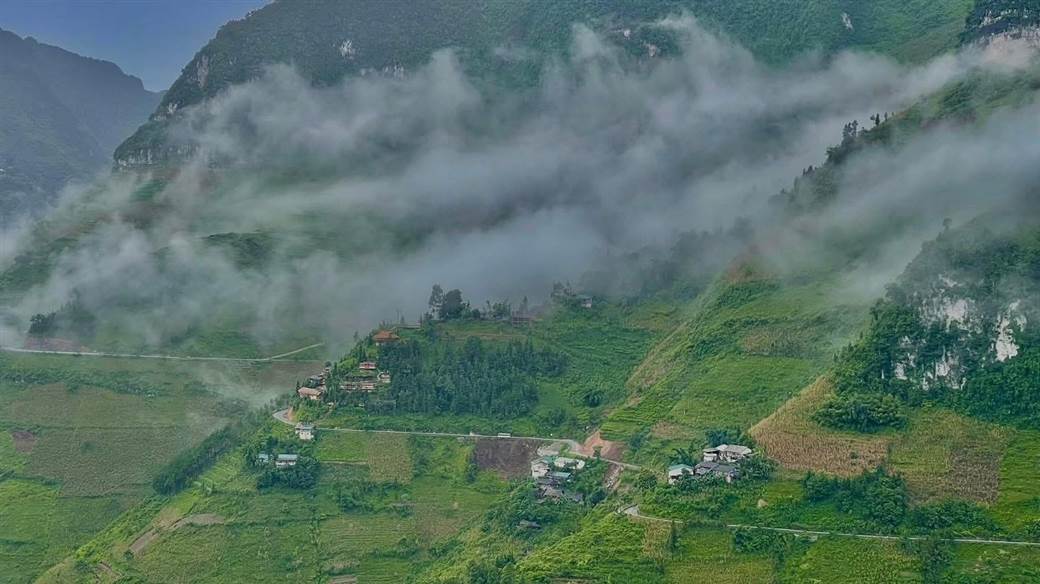
Tham Ma Pass, Ha Giang – Don’t miss these must-see experiences
3.2 Dong Van Karst Plateau Geopark
Recognized by UNESCO in 2010, the Dong Van Karst Plateau Geopark spans four districts and covers 2,356 square kilometers of extraordinary geological formations. This designation acknowledges not only the area’s scientific significance but also the remarkable cultural adaptations of communities living in this challenging landscape. The plateau formed over 400 million years ago when the area lay beneath ancient seas, creating a landscape of fossiliferous limestone pinnacles, deep canyons, and hidden caves.
Among the geopark’s most fascinating features are the “rock deserts” where limestone outcroppings create seemingly barren landscapes where local farmers incredibly still manage to cultivate crops. These stone forests reveal visible marine fossils dating back to the Devonian period, offering windows into Earth’s distant past. Underground, extensive cave systems like Lung Khuy Cave display magnificent stalactite and stalagmite formations illuminated by modern lighting systems for visitors.
The geopark’s biodiversity complements its geological wonders, with numerous endemic plant species adapted to limestone environments and rare wildlife including the Tonkin snub-nosed monkey, one of the world’s most endangered primates. Phieu Travel’s guided excursions through the geopark combine geological education with cultural encounters, helping visitors appreciate both the natural formations and the human ingenuity that has made life possible in this extreme environment for centuries.
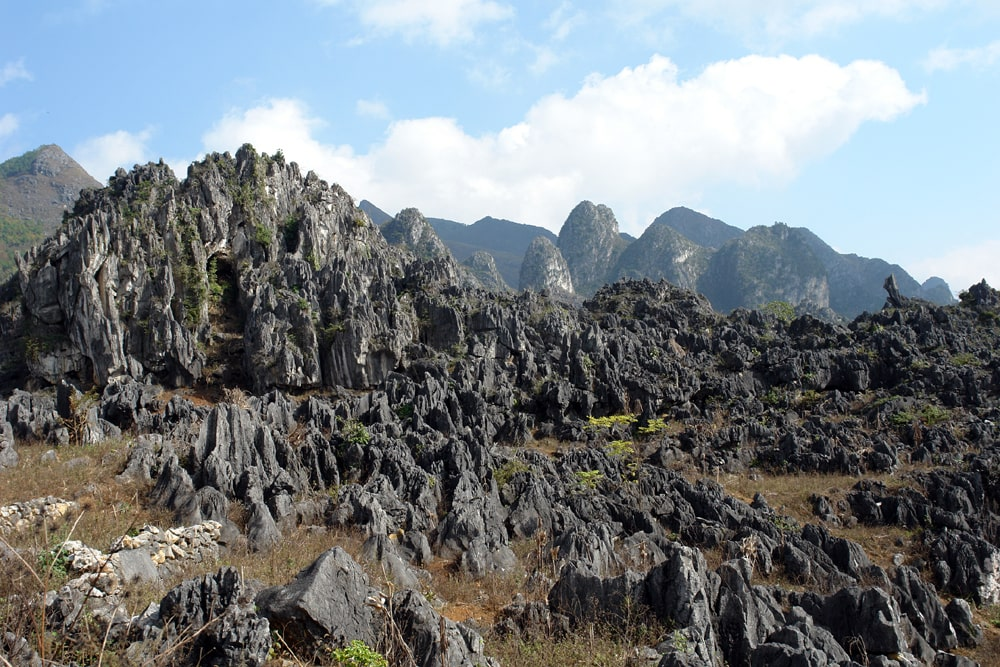
Dong Van Karst Plateau Travel: What to Do, When to Go and Must-Visit Places
3.3 Lung Cu Flagpole
Standing proudly at Vietnam’s northernmost point, the Lung Cu Flagpole serves as both a geographical landmark and a powerful symbol of national identity. Positioned atop Dragon Mountain at an elevation of 1,700 meters, the 33-meter flagpole supports a massive Vietnamese flag measuring 54 square meters representing the 54 ethnic groups that comprise the nation. The site offers profound significance for Vietnamese visitors who often make patriotic pilgrimages to this remote corner of their homeland.
Reaching the flagpole requires climbing 389 stone steps from the parking area through forested slopes. The effort rewards visitors with breathtaking 360-degree views across valleys dotted with villages and terraced fields, with China visible just beyond the border. On clear days, the panorama extends to include both Vietnamese and Chinese territories, highlighting the geographical significance that has shaped this frontier region’s complex history.
Surrounding the flagpole, the small ethnic Lo Lo village of Lo Lo Chải offers insight into life at Vietnam’s geographic extremity. The community’s stone houses with thatched roofs represent traditional architecture adapted to the harsh mountain climate. Phieu Travel arranges respectful visits to local homes where travelers can learn about Lo Lo customs and traditional crafts, creating meaningful cultural exchanges that benefit the remote community while preserving its dignity and traditions.
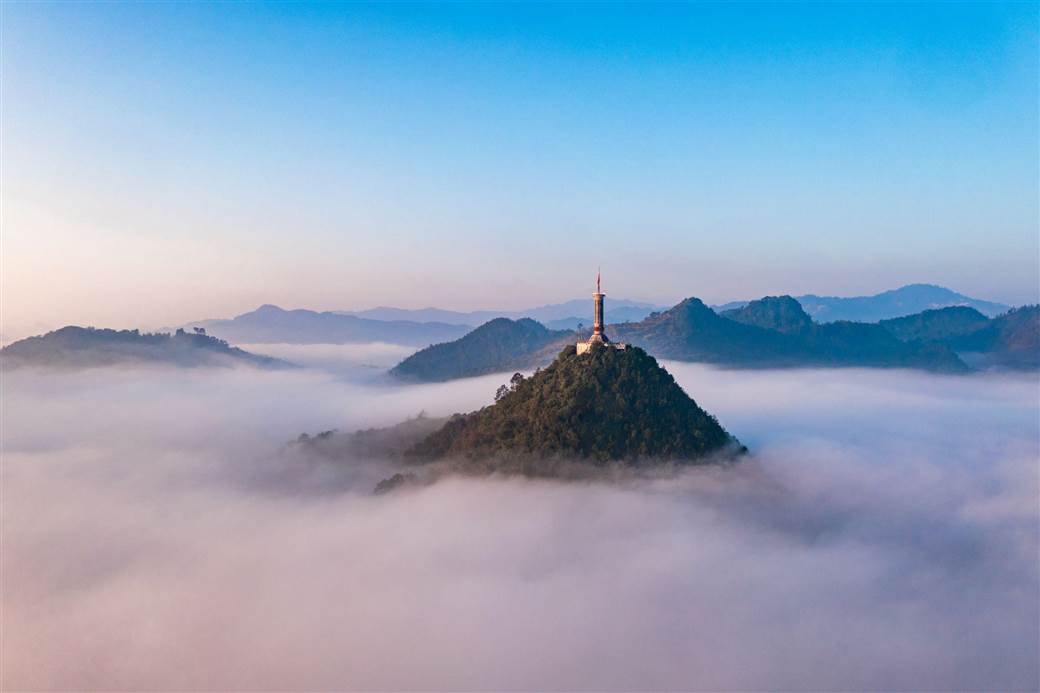
Lung Cu Flag Tower – A Sacred Symbol at Vietnam’s Northernmost Point
3.4 Terraced Rice Fields
Ha Giang’s terraced rice fields represent masterpieces of agricultural engineering, transforming precipitous mountain slopes into productive farmland through generations of human labor. Unlike the more famous rice terraces of Sapa, Ha Giang’s stepped fields maintain a wilder, less manicured appearance that reflects their primary purpose as working agricultural land rather than tourist attractions. These living landscapes change dramatically with the seasons, offering different but equally mesmerizing views throughout the year.
The most extensive terraced fields appear in the districts of Hoang Su Phi and Xin Man, where entire mountainsides have been sculpted into curved platforms that follow natural contours. In spring (February-March), the newly flooded fields create mirror-like surfaces reflecting the sky. By mid-summer, vibrant green rice plants carpet the terraces. Autumn (September-October) brings golden waves of ripening grain before harvest returns the landscape to earthy browns during winter months.
These agricultural marvels represent more than scenic beauty they embody the relationship between ethnic minority communities and their challenging environment. Most terraces were built by hand over centuries, using knowledge passed through generations of Hmong, Dao, and Tay farmers. Today, as younger people increasingly seek opportunities in cities, some communities face challenges maintaining these labor-intensive systems. Sustainable tourism initiatives supported by Phieu Travel help create economic incentives for preserving both the terraced landscapes and the traditional farming knowledge they represent.
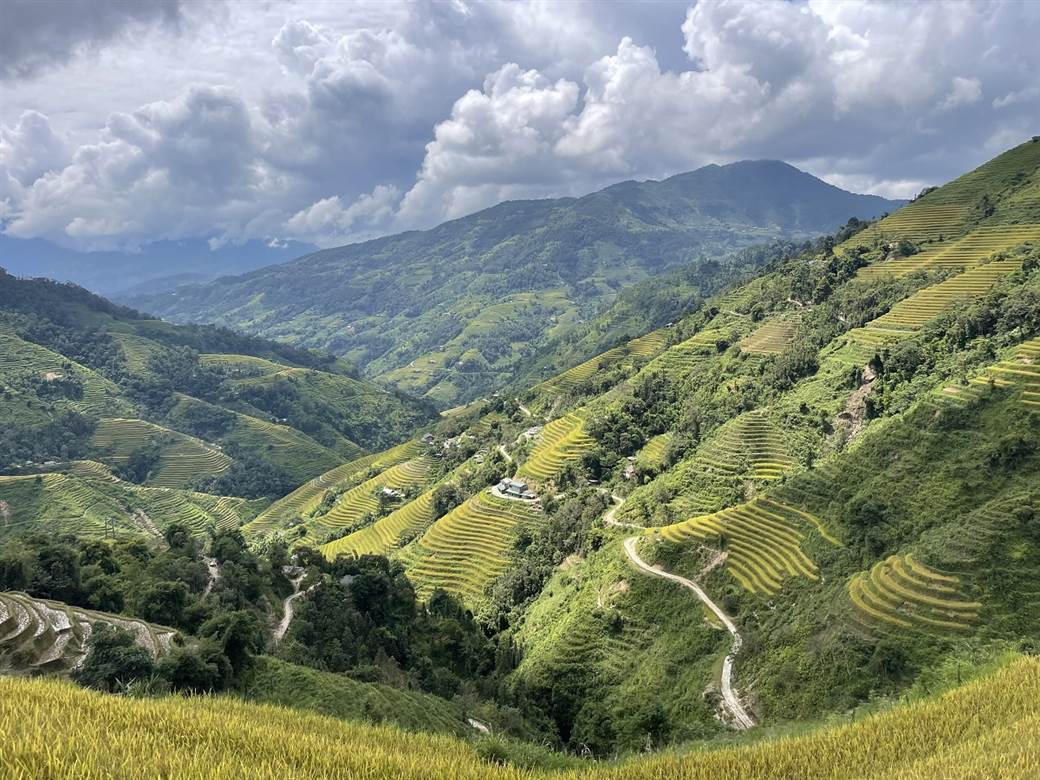
4. Adventure & Activities
Whether trekking through hidden valleys or conquering the legendary Ha Giang Loop, adventure awaits at every turn. Local markets and festivals add a cultural heartbeat to the journey.
4.1 Trekking Trails
Ha Giang offers some of Vietnam’s most rewarding trekking experiences, with routes ranging from gentle half-day walks to challenging multi-day expeditions. Unlike more developed trekking regions, many of Ha Giang’s trails evolved naturally from pathways used by local people rather than being purpose-built for tourism. This authenticity provides unique opportunities to experience both stunning landscapes and genuine cultural encounters away from established tourist circuits.
The Quan Ba area features accessible trails leading through pine forests and Hmong villages, ideal for beginners or those with limited time. More experienced trekkers can tackle the challenging route from Lung Tam to Du Gia, traversing diverse ecosystems including bamboo forests, limestone outcrops, and terraced valleys over two days. The most adventurous option connects Dong Van and Meo Vac via mountain trails that parallel but avoid the main road, offering perspectives of Ma Pi Leng Pass impossible to see from vehicles.
Trekking in Ha Giang requires proper preparation due to limited infrastructure along most routes. Phieu Travel arranges guided treks with local guides who ensure culturally appropriate interactions with communities along the way. Our guides share detailed knowledge of local plants, agricultural practices, and cultural significance of different locations. Multi-day treks typically include homestay accommodations in ethnic minority villages, providing authentic cultural immersion and direct economic benefits to remote communities while minimizing ecological impact.
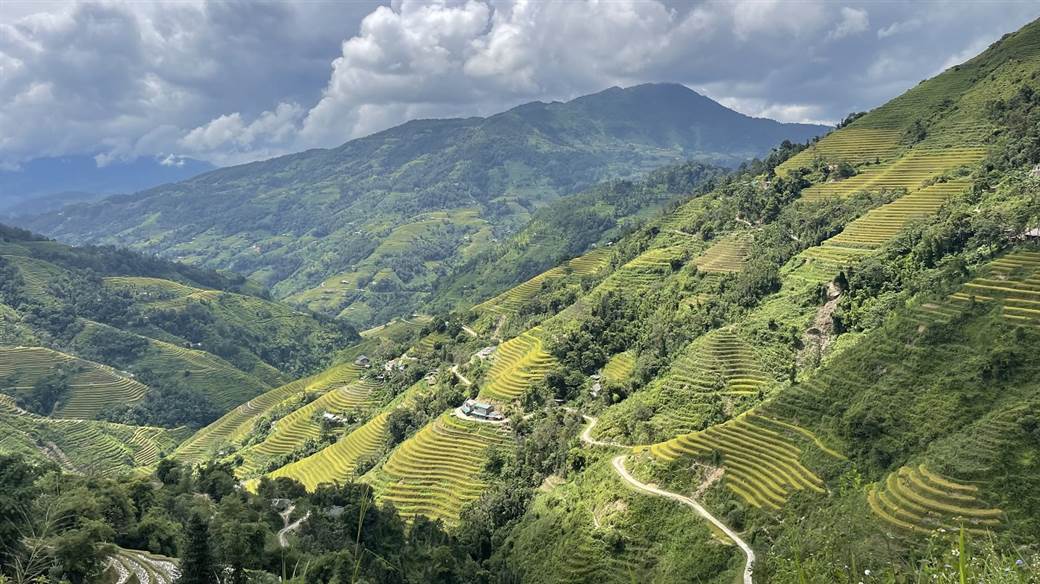
Ha Giang Trekking Tours: Ultimate Guide for Adventurers 2025
4.2 Motorcycle Routes
The legendary Ha Giang Loop has emerged as Vietnam’s premier motorcycle adventure, drawing riders from across the globe to experience its challenging roads and spectacular scenery. The classic circuit covers approximately 350 kilometers, typically completed over 3-5 days depending on riding pace and side excursions. Beginning and ending in Ha Giang City, the route traverses mountain passes, ethnic minority villages, and some of Southeast Asia’s most dramatic landscapes.
The standard counterclockwise itinerary proceeds from Ha Giang to Quan Ba, Yen Minh, Dong Van, Meo Vac, and back via Du Gia. Experienced riders can add challenging extensions to Hoang Su Phi’s terraced fields or the remote Ban Gioc waterfall near the Chinese border. Road conditions vary significantly while main sections have seen recent improvements, many segments remain narrow with tight switchbacks, unpredictable surfaces, and occasional rockfalls during rainy periods.
Safety considerations are paramount for motorcycle adventures in Ha Giang. Phieu Travel provides quality equipment including proper helmets and protective gear, well-maintained motorcycles appropriate to rider experience levels, and professional guides familiar with local road conditions. For less experienced riders, we offer “easy rider” options where you ride as a passenger with an experienced local driver. All motorcycle tours include comprehensive briefings on road safety, cultural etiquette, and environmental responsibility to ensure this growing tourism activity remains sustainable for both visitors and local communities.
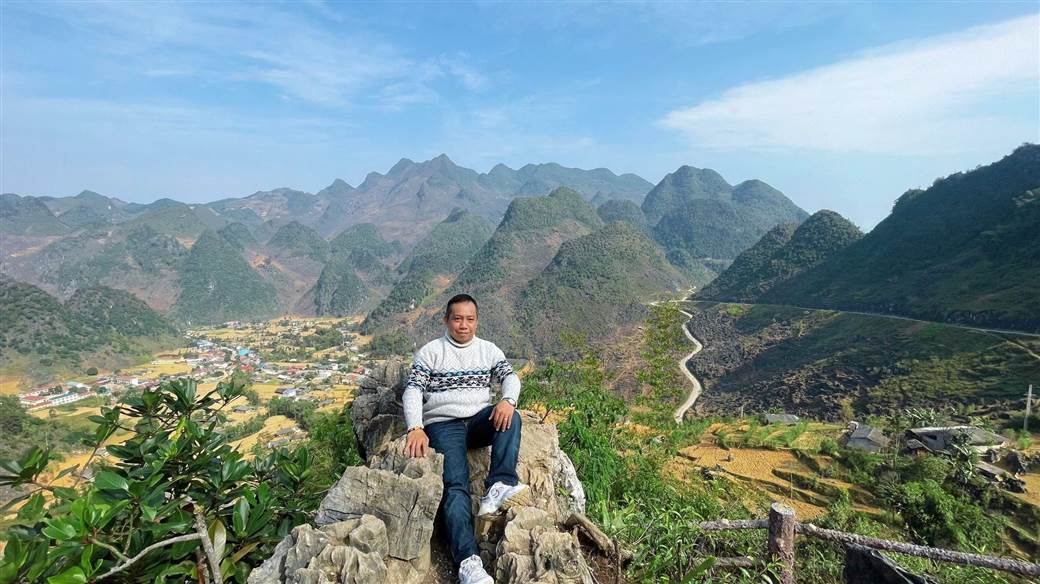
4.3 Local Markets & Cultural Festivals
Ha Giang’s vibrant markets provide windows into authentic highland culture, operating not primarily for tourists but as essential community gathering spaces. Each district hosts weekly rotating markets where ethnic groups from surrounding villages converge to trade goods, exchange news, and maintain social connections. Dong Van’s Sunday market stands as the region’s largest, drawing Hmong, Dao, Giay, and Tay people in traditional dress selling everything from medicinal herbs to handcrafted textiles.
Market visits offer unparalleled photographic opportunities and chances to purchase authentic handicrafts directly from artisans. Early morning arrivals (before 8 AM) provide glimpses of trading traditions as minority groups arrive from distant villages. The livestock sections, where water buffalo, pigs, and chickens change hands, reveal agricultural practices largely unchanged for generations. Food sections showcase regional specialties like thang co (horse meat soup), smoked pork, and corn wine staples of highland cuisine.
Beyond regular markets, Ha Giang’s festival calendar features celebrations tied to agricultural cycles and spiritual traditions. The Gau Tao festival (January-March) sees Hmong communities gather for several days of rituals, games, and courtship opportunities. The Long Tong (Field Work) festival marks the beginning of the planting season with buffalo fights, folk music, and prayers for abundant harvests. Phieu Travel times many itineraries to coincide with these authentic cultural events, arranging respectful participation that enhances rather than disrupts local traditions, creating meaningful connections between visitors and host communities.
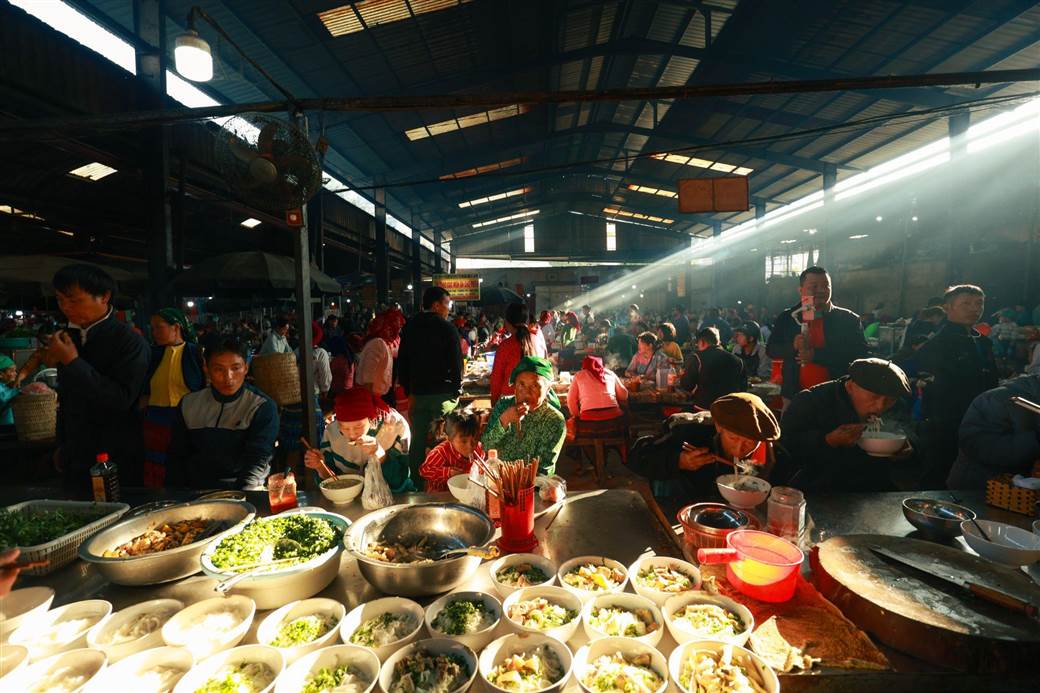
Ha Giang Loop in February: Complete Guide (Weather, Tips & Experience)
5. Travel Essentials
Reaching Ha Giang requires preparation, but the journey itself is unforgettable. With the right planning, visitors can travel safely, stay comfortably, and enjoy affordable adventures.
5.1 How to Get There
Reaching Ha Giang requires some effort, but the journey itself forms part of the adventure. Most travelers begin from Hanoi, which offers several transportation options to the provincial capital. Public buses provide the most economical choice, with multiple daily departures from Hanoi’s My Dinh bus station. The journey takes approximately 6-7 hours on increasingly improved highways, though the final approaches involve mountain roads with sharp curves and occasional rough sections.
For those preferring more comfort and flexibility, private car services arranged through Phieu Travel offer door-to-door convenience with professional drivers familiar with mountain routes. This option allows scenic stops along the way and adjustable departure times. The most adventurous travelers sometimes ride motorcycles directly from Hanoi, though this requires significant riding experience and typically takes a full day with an overnight stop recommended in towns like Thai Nguyen or Tuyen Quang.
Once in Ha Giang City, local transportation options for exploring the province include motorcycle rentals (the most popular choice), private cars with drivers, or joining small group tours. Public transportation within the province remains limited to basic local buses connecting major towns, with infrequent schedules that can constrain independent travel. Phieu Travel can arrange permits required for the border areas and recommends allowing at least one day’s buffer in itineraries during rainy season (May-September) when landslides occasionally cause road closures requiring detours.
5.2 Where to Stay (Hotels/Homestays)
Accommodation options in Ha Giang have expanded significantly in recent years while retaining authentic character. In Ha Giang City, several mid-range hotels offer comfortable rooms with modern amenities, providing good bases before and after loop adventures. District towns like Dong Van and Meo Vac now feature boutique guesthouses in renovated traditional buildings, some with stunning mountain views from private terraces.
The most culturally immersive experiences come through homestays in ethnic minority villages. These range from basic accommodations in traditional homes to more developed community-based tourism initiatives with improved facilities. Hmong homestays typically feature large communal sleeping platforms with privacy curtains, while Tay and Nung homestays offer raised sleeping quarters in traditional stilt houses. All provide opportunities to share meals with host families and observe daily life up close.
Phieu Travel partners with homestays that maintain authentic experiences while meeting reasonable comfort standards. We select families committed to cultural preservation and ensure fair compensation that benefits entire communities. Advance booking is essential during peak periods (September-November and February-April), especially for quality homestays which have limited capacity. Most accommodations throughout the province remain affordable by international standards, with prices ranging from $10-15 for basic homestays to $40-60 for the best boutique options in main towns.
5.3 Safety & Cost Tips
Traveling in Ha Giang requires practical preparation to ensure both safety and enjoyment. The remote location means limited medical facilities outside the provincial capital travelers should carry basic first aid supplies and any necessary medications. Weather can change rapidly in mountain areas, making waterproof clothing essential even outside the main rainy season. Mobile phone coverage has improved dramatically but remains patchy in the most remote valleys; downloading offline maps is highly recommended.
Road safety deserves special consideration for motorcycle travelers. Phieu Travel strongly advises against riding without previous experience, proper licenses, and comprehensive insurance. Weather-related hazards include fog reducing visibility and sudden rainstorms creating slippery surfaces. During winter months (December-February), morning temperatures can drop below 10°C at higher elevations, requiring warm layers for comfortable riding.
Budget considerations vary with travel style, but Ha Giang remains relatively affordable. Daily expenses typically range from $25-30 for budget travelers using basic homestays and local eateries to $80-100 for more comfortable accommodations and private transportation. Motorcycle rentals average $10-15 per day for manual bikes, with automatic models slightly more expensive. Most transactions in rural areas require cash, as card facilities remain limited even in larger towns. Phieu Travel recommends carrying sufficient Vietnamese dong for your entire journey, as ATMs function sporadically outside Ha Giang City.
Ha Giang Loop cost guide 2025: real prices, tour options & savings
6. Sustainable Tourism & Future Orientation
Tourism in Ha Giang is growing, but preservation remains crucial. Sustainable initiatives and community-based tourism ensure cultural integrity while benefiting local people.
6.1 Preservation Efforts
As Ha Giang’s tourism profile rises, coordinated preservation efforts have become increasingly vital. The provincial government has implemented zoning regulations within the UNESCO Geopark to protect geological features from inappropriate development. These measures restrict construction in sensitive areas and establish guidelines for architecture that complements rather than detracts from natural landscapes. Simultaneously, cultural heritage preservation initiatives document traditional practices, support language retention programs, and fund apprenticeships for younger generations to learn traditional crafts.
Non-governmental organizations play crucial roles in sustainable development. Organizations like Action for Ha Giang work with communities to develop ecotourism models that generate income while conserving natural resources. Their projects include training local guides, establishing homestay standards, and creating educational materials about the region’s biodiversity and cultural significance. These efforts help ensure tourism growth doesn’t undermine the very qualities that make Ha Giang special.
Phieu Travel contributes to preservation through carefully designed itineraries that spread visitor impact across multiple communities rather than concentrating pressure on a few “showcase” villages. We implement strict waste management practices for all tours, including carrying out non-biodegradable materials from remote areas. Our financial model includes direct contributions to community development funds and support for cultural documentation projects. By emphasizing quality experiences over visitor volume, we help demonstrate that preservation and economic development can work in harmony rather than opposition.
6.2 Community Tourism Initiatives
Community-based tourism has emerged as Ha Giang’s most promising development model, creating economic opportunities while maintaining local control over cultural representation. Successful initiatives like the Lung Tam Linen Cooperative allow visitors to observe traditional Hmong textile production while providing stable income for women artisans. These cooperatives reinvest portions of tourism revenue into educational scholarships, ensuring younger generations can access opportunities beyond traditional subsistence farming.
Village-managed tourism committees now operate in communities like Du Gia, Pho Cao, and Nam Dam, setting visitor quotas, establishing pricing standards, and ensuring benefits spread equitably throughout the community. These committees organize cultural demonstrations, maintain traditional architecture, and coordinate homestay improvements that balance authentic experiences with reasonable comfort standards. By placing decision-making authority with community members, these models help prevent the cultural commodification that has damaged authenticity in more developed tourism destinations.
Phieu Travel partners exclusively with community initiatives that demonstrate strong local leadership and equitable benefit distribution. Our long-term relationships with village tourism committees include capacity building workshops, marketing support, and feedback mechanisms that help communities refine their offerings while maintaining cultural integrity. We encourage travelers to engage respectfully with these initiatives asking permission before photography, learning basic greetings in local languages, and showing genuine interest in cultural practices rather than treating them as performances. Through these thoughtful interactions, tourism becomes a force for cultural pride and preservation rather than exploitation.
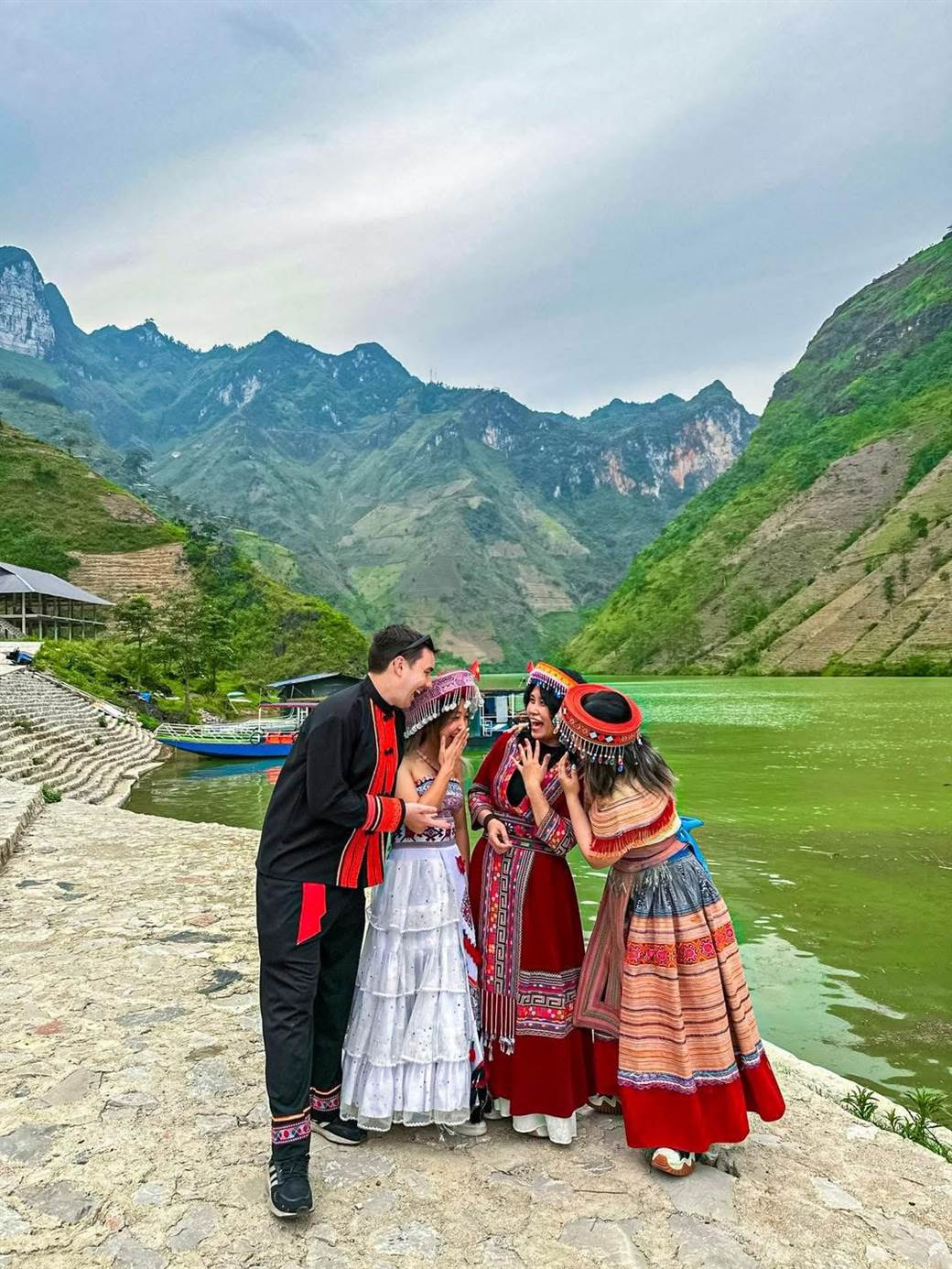
Ha Giang Province in Northeast Vietnam offers travelers a rare combination of breathtaking natural landscapes, living cultural traditions, and authentic adventures increasingly difficult to find in our globalized world. From the vertigo-inducing curves of Ma Pi Leng Pass to intimate moments shared around homestay cooking fires, experiences here create lasting impressions that transcend typical tourism. The province’s remoteness has preserved both its ecological treasures and cultural heritage, creating opportunities for meaningful discovery that benefit both visitors and local communities.
As you plan your journey to this remarkable region, consider how your choices can support sustainable development. Selecting locally-owned accommodations, hiring guides from ethnic minority communities, purchasing directly from artisans, and respecting cultural sensitivities all contribute to tourism that enriches rather than exploits. The extra effort required to reach Ha Giang’s remote corners rewards travelers with experiences of extraordinary depth and authenticity.
Phieu Travel remains committed to responsible tourism development that preserves what makes Ha Giang special. Our expert guides, carefully vetted community partnerships, and thoughtfully designed itineraries help you navigate both the physical landscape and cultural complexities of this frontier region. Whether you’re drawn by photography opportunities, motorcycle adventures, cultural immersion, or simply the chance to experience Vietnam beyond the familiar tourist trail, we invite you to discover the untamed beauty of Ha Giang Province in Northeast Vietnam with us. Learn more about our commitment to sustainable tourism and browse our customizable Ha Giang itineraries at Phieutravel.com.
Read more:
- Rainy season in Ha Giang: what to expect, when to go, and travel tips
- Vi Xuyen District, Ha Giang: Complete guide to Vietnam’s historic frontier
- Conquer Tay Con Linh Peak – Ha Giang’s Highest Mountain 2025

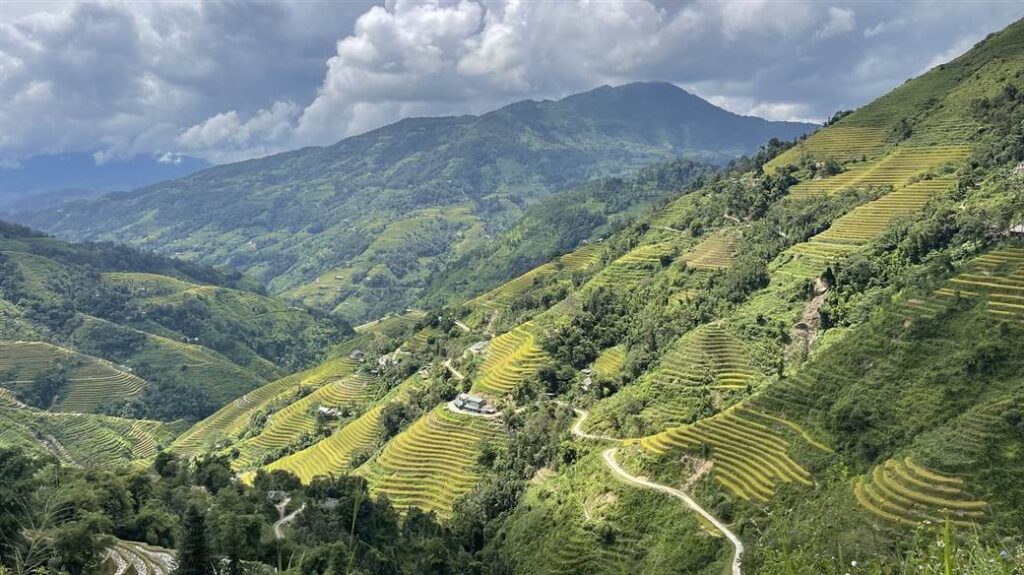
You Might Also Like
Ha Giang Weather in September: Complete Guide for Travelers
Exploring the magnificent Ha Giang Loop in September offers travelers a perfect balance of favorable[...]
Quan Ba Twin Mountains: Ha Giang’s Iconic Fairy Hills and Complete Travel Guide
The mystical Quan Ba Twin Mountains rise from the emerald valleys of Ha Giang like[...]
Vuong family mansion: the architectural marvel and cultural legacy of Ha Giang
Deep in Vietnam’s northern highlands, where mist-shrouded mountains meet terraced rice fields, stands a testament[...]
Ha Giang Loop Safety Tips: How to Ride Securely in Vietnam’s Northern Mountains
The Ha Giang Loop, with its winding mountain roads and breathtaking landscapes, offers one of[...]
The Ultimate Guide to the M-Shaped Curve on Ha Giang Loop
Vietnam’s remote northern province of Ha Giang hides a natural wonder that has captivated adventurous[...]
Most Beautiful Places to Visit in Vietnam: Essential Destinations and Insider Tips
Vietnam captivates travelers with its stunning landscapes, rich cultural heritage, and warm hospitality. From mist-shrouded[...]
Beyond the Beaten Path: Discovering Ha Giang Province in Northeast Vietnam
Ha Giang Province in Northeast Vietnam stands as one of the country’s last frontiers for[...]
Rainy season in Ha Giang: what to expect, when to go, and travel tips
Vietnam’s northern frontier reveals a different face during the rainy season, transforming Ha Giang’s limestone[...]